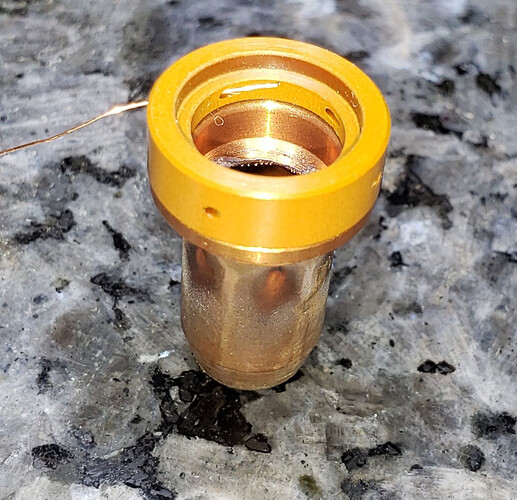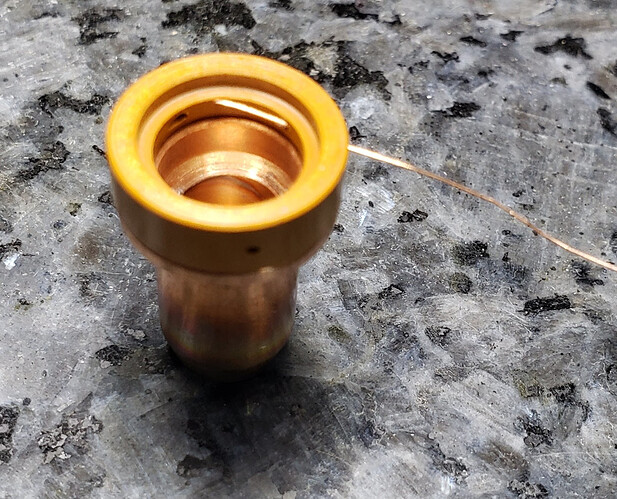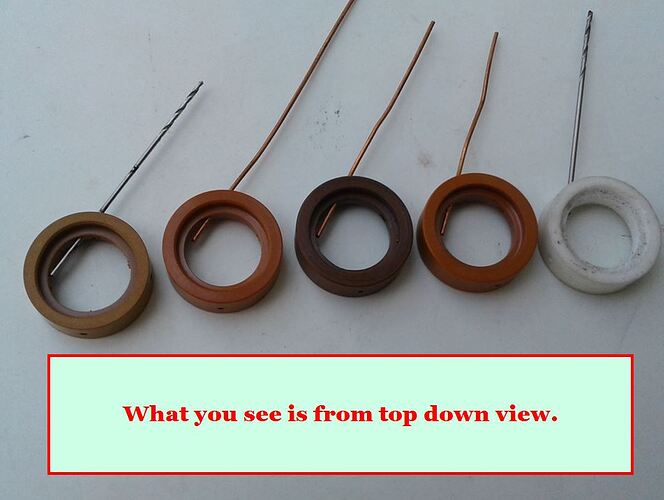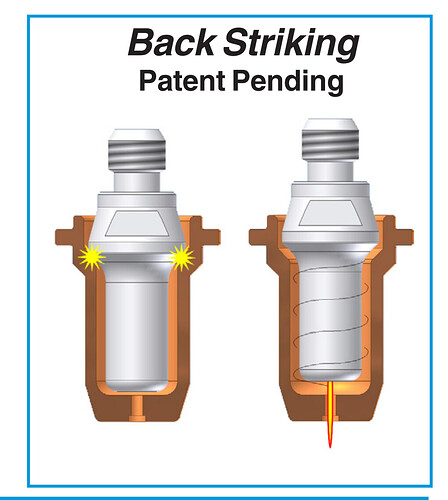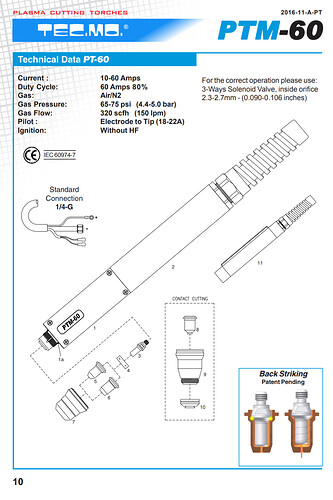This is becoming quite the subject.
@manoweb I think it’s awesome that you went as far as to call the manufacturer.
I’m going to post a couple things that leads me to believe that clockwise is the correct direction in most cases.
Start with a quote from @jimcolt . This was from the hypertherm website.
"The very early systems from the 1960’s created a plasma arc using something
called laminar gas flow. The gas flowed straight down through the torch so
cut direction didn’t matter. The torch would produce an equally bad cut, with a
severe bevel, on both sides.
Plasma process engineers were obviously aware of this limitation and spent
years trying to overcome it. Eventually, engineers discovered they could reduce
the angle of the cut by swirling the gas flow through the consumable stack.
There was one constraint however: you could only improve cut quality on one
side of the kerf. Swirl the gas clockwise while the torch was moving away from
you, and you’d get a rather severe bevel on the left side of the torch and a slight
bevel on the right. Swirl the gas counterclockwise, and the opposite cut issue
would occur. The left side would have the slight bevel and the right side would
be severe.
Engineers have continued to refine gas swirl through the years and though the
bevel is much less pronounced on both sides of the kerf, there is still a good
side and a bad side which is why cut direction matters.
On some plasma systems there are available swirl rings that can swirl both
clockwise and counterclockwise. If, as an example, you are using two torches
simultaneously to cut strips from a plate, you could use a clockwise swirl in the
left torch to provide a square kerf on the right and a counterclockwise swirl on
the right torch to obtain a square kerf on the left.
That said, nearly all (99.9 percent) plasma cutting is done using a clockwise
swirl. A good way to remember the proper cut direction is to think of cutting a
ring. The inside diameter is always cut in a counterclockwise direction, while the
outside diameter is cut in a clockwise direction. This keeps the squarest edge
on the inside diameter and outside diameter of the ring, and the more beveled
edge stays in the scrap.
Most CAM software for plasma cutting (the key word here is “most” since
software designed for milling or routing often allows the programmer to set
direction) will automatically choose the correct direction. As the standard swirl
rings for plasma cutting are always clockwise swirl, counterclockwise swirl rings
are rarely used and in fact, are not even available for many plasma torches."
Here’s a graphic that illustrates the above text very well

And I want to dive into some TEC.MO documentation
http://www.tecmo.it/upld/repository/File/2016-11-A-PT.pdf
When I look at these spec sheets and breakdowns of all these tecmo torches.
Each one has this graphic for the back striking which does clearly show the swirl moving down the electrode clockwise. 
All this leaves me with this question.
Why create a swirl ring with directional holes if it does not matter which direction it is installed?
![]() which one is it, A or B?
which one is it, A or B?